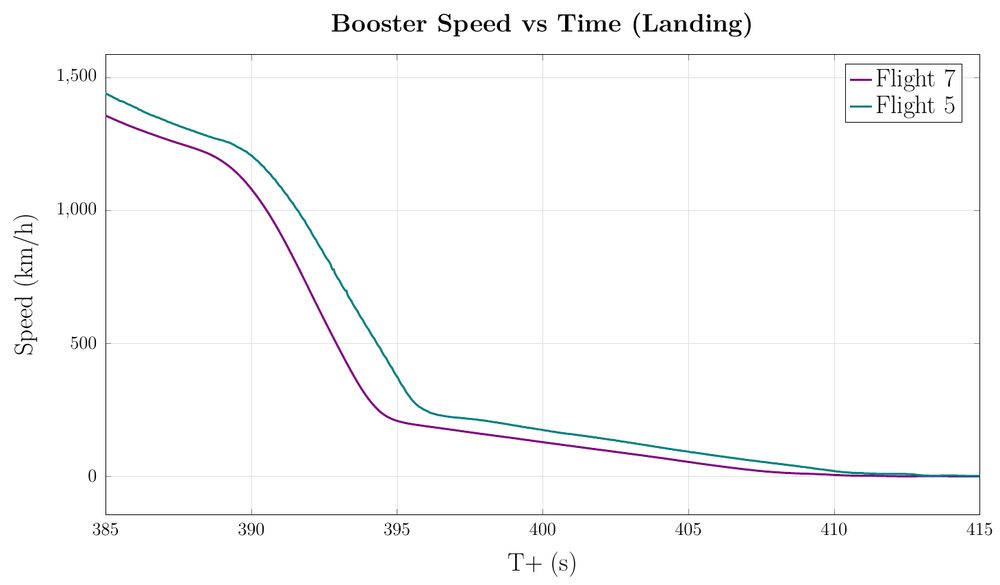
As always this could be intentional (McGregor's the place they do tests to destruction), or just an unhappy raptor.
@nasaspaceflight.com
nsf.live/mcgregor
As always this could be intentional (McGregor's the place they do tests to destruction), or just an unhappy raptor.
@nasaspaceflight.com
nsf.live/mcgregor
Thankfully no one seems injured and crews were able to quickly extinguish it. They're already back at work cutting it up to make way for the new design!
@nasaspaceflight.com
nsf.live/starbase
Thankfully no one seems injured and crews were able to quickly extinguish it. They're already back at work cutting it up to make way for the new design!
@nasaspaceflight.com
nsf.live/starbase

Whatever the bottleneck was seems to have been eliminated mid-April given the sudden change in direction. It would be super interesting to know what improvements were made

Whatever the bottleneck was seems to have been eliminated mid-April given the sudden change in direction. It would be super interesting to know what improvements were made
How does this bode for their 170 flight goal this year? Short answer, quite well! Details in thread
@nasaspaceflight.com
nsf.live/mcgregor

How does this bode for their 170 flight goal this year? Short answer, quite well! Details in thread
@nasaspaceflight.com
nsf.live/mcgregor
Just 3 days, 22 hours, 26 minutes, and 31 seconds from the first to fifth test, highlighting what the McGregor teams are capable of. Typically they test one every two days.
Watch live: nsf.live/mcgregor
@nasaspaceflight.com
Just 3 days, 22 hours, 26 minutes, and 31 seconds from the first to fifth test, highlighting what the McGregor teams are capable of. Typically they test one every two days.
Watch live: nsf.live/mcgregor
@nasaspaceflight.com
Even if some engines have been fired multiple times, it's reasonable to assume 2nd stages aren't held up by MVacs.

Even if some engines have been fired multiple times, it's reasonable to assume 2nd stages aren't held up by MVacs.
However, since early April they've been testing at a record pace! If they keep it up they will end the year with a surplus of 2nd stages!

However, since early April they've been testing at a record pace! If they keep it up they will end the year with a surplus of 2nd stages!
McGregor tests every 2nd stage, so we can get a look at whether the production/test rate is on track to meet their goal.
The short answer is they're on a solid trajectory - more analysis in thread!
@nasaspaceflight.com
nsf.live/mcgregor

McGregor tests every 2nd stage, so we can get a look at whether the production/test rate is on track to meet their goal.
The short answer is they're on a solid trajectory - more analysis in thread!
@nasaspaceflight.com
nsf.live/mcgregor
McGregor's Raptor Horizontal stand has beaten its record of 385 seconds with a test today lasting 460 seconds!
This isn't a McGregor test record (that's held by Tripod's 897 second test) but it's a dominant second place.
@nasaspaceflight.com
nsf.live/mcgregor
McGregor's Raptor Horizontal stand has beaten its record of 385 seconds with a test today lasting 460 seconds!
This isn't a McGregor test record (that's held by Tripod's 897 second test) but it's a dominant second place.
@nasaspaceflight.com
nsf.live/mcgregor
Despite this, three dips in testing rate has put the testing deficit at exactly the same point as last year.
Again blue is 2025 and red is 2024

Despite this, three dips in testing rate has put the testing deficit at exactly the same point as last year.
Again blue is 2025 and red is 2024
Starting with MVac, the data is looking great.
This is their surplus compared to 170 tests per year. Blue is 2025, red is 2024
@nasaspaceflight.com
nsf.live/mcgregor

Starting with MVac, the data is looking great.
This is their surplus compared to 170 tests per year. Blue is 2025, red is 2024
@nasaspaceflight.com
nsf.live/mcgregor
nsf.live/mcgregor
@nasaspaceflight.com
nsf.live/mcgregor
@nasaspaceflight.com
Here's an approximate visualization of a Starship stack on ex-John F. Kennedy as it entered the Port of Brownsville for scrapping.
~408ft vs ~1,106ft
Apologies (or you're welcome) for the Ship 26 style stack
@nasaspaceflight.com
Here's an approximate visualization of a Starship stack on ex-John F. Kennedy as it entered the Port of Brownsville for scrapping.
~408ft vs ~1,106ft
Apologies (or you're welcome) for the Ship 26 style stack
@nasaspaceflight.com
Ultimately S33 ended up about 5,200km/h slower and about 4km lower than S30.

Ultimately S33 ended up about 5,200km/h slower and about 4km lower than S30.


Future Ship upgrades might slow and lower the trajectory further, while Booster upgrades might do the opposite.

Future Ship upgrades might slow and lower the trajectory further, while Booster upgrades might do the opposite.
Compared to Flight 5, Starship's 7th flight took a lower and slower approach likely thanks to the larger v2 Ship.
At MECO, B14 was traveling about 850km/h slower than B12. The rest of the flight was also slower, including more consistent acceleration on ascent.

Compared to Flight 5, Starship's 7th flight took a lower and slower approach likely thanks to the larger v2 Ship.
At MECO, B14 was traveling about 850km/h slower than B12. The rest of the flight was also slower, including more consistent acceleration on ascent.


nsf.live/starbase
nsf.live/starbase
nsf.live/starbase
nsf.live/starbase
nsf.live/mcgregor
nsf.live/mcgregor

